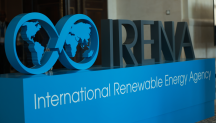

Global Hydrogen Trade to Meet the 1.5°C Climate Goal: Trade Outlook for 2050 and Way Forward
Newsletter
By effectively increasing the distance over which it is cost-effective to transport energy, green hydrogen can unlock new possibilities for energy trade, giving rise to new players and providing opportunities for energy exporters to pivot towards a net zero system.
In a 1.5°C future, around 25% of hydrogen could be globally traded - half in the form of ammonia transported by sea, and half through gaseous hydrogen pipelines concentrated in Europe and Latin America. Around 70% of hydrogen traded would be used as feedstock and fuel, rather than reconverted to hydrogen following transport.
This report explores key actions and milestones in relation to market creation, infrastructure and regulation, certification, technology, cost gaps and financing. It reveals that the share of trade remains relatively constant across multiple scenarios; but that the outlook for specific countries can change drastically, depending on assumptions. The most influential and uncertain parameter is the cost of capital and the differential between countries.
Part II: Technology Review of Hydrogen Carriers
Part III: Green Hydrogen Cost and Potential
See the visual story: Global Hydrogen Trade in a 1.5°C Scenario




